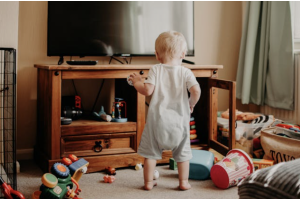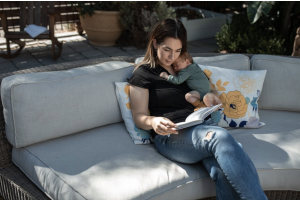A Guide to Adapting Your Childcare Philosophy As Kids Grow

Children grow at a pace that often catches adults off guard. As they shift from crawling to walking, babbling to conversing, and solitary play to social interactions, the environments and approaches that support them also need to shift.
In early childhood settings, the core beliefs guiding teaching and caregiving can’t stay static. The way a program introduces infants to their first routines won’t meet the evolving needs of preschoolers who are developing independence and stronger preferences. Adapting a childcare philosophy to match those changes is about layering, adjusting, and extending strategies to meet children where they are.
Linking Philosophy to Everyday Practice
A clear philosophy gives educators a starting point, but adapting it over time strengthens its relevance. Many early learning centers, like Kidz Galore, draw on guiding values that place children’s individual needs, family connections, and community engagement at the center. That foundation helps educators stay grounded while adjusting their practices as children mature.
This might involve updating routines to match longer attention spans. It could also mean rethinking behavior strategies that suited toddlers but no longer meet the needs of older preschoolers. Activities may need to shift as children's interests become more defined.
Growth Isn’t Linear
Development often follows patterns, but not always predictably. Some children speak fluently early on, while others take time. A child might excel in physical coordination but need more support with social-emotional development.
When early childhood education centers treat philosophy as a flexible tool, it becomes easier to support each child’s pace. Making space for varied learning styles and sensory preferences, for example, respects that growth doesn’t look the same for everyone. Staying flexible also allows educators to respond thoughtfully when children revisit earlier behaviors, especially during transitions or when they’re processing new experiences.
Rethinking Structure and Curriculum
Program planning for infants and toddlers often focuses on caregiving routines and basic trust. As children move toward preschool and pre-K, those same programs might gradually shift toward developmentally appropriate programs that include group learning, thematic activities, and more structured lesson plans.
Older children often show readiness for more structured activities. They can participate in conversations with greater depth, follow instructions with several steps, and begin forming positive relationships with those around them. Some programs draw from the Montessori Method or emergent curriculum approaches to support this transition, blending teacher-led learning with opportunities for child-directed exploration.
Why Reflection Matters
No childcare philosophy adapts on its own. Ongoing reflection helps educators track how children respond to various practices. Do children seem more engaged outdoors than during seated group time? Are certain transitions consistently triggering frustration?
Reflective teams don’t wait for challenges to escalate; they pause to ask what’s working, what’s not, and why. For example, a teacher might notice that their expectations for circle time exceed what most children can comfortably manage, prompting a review of early learning standards and a search for alternatives. When staff members make time for this kind of reflection, adaptations come from observation rather than guesswork.
Reinforcing a Sense of Belonging
A child pauses at the dress-up corner, watching others play before stepping in. Another brings a book from home and asks if it can be read aloud. These small moments reveal how children look for signs that they’re accepted, understood, and included. Belonging is built through consistency, shared experiences, and meaningful interactions. For younger toddlers, this may come from familiar caregivers and steady routines.
Programs that actively support respect for diversity can create space for these connections to grow. Offering books with inclusive characters, celebrating different traditions, and displaying family photos at children’s eye level helps them feel seen. Some curriculum models also include opportunities for children to share their home languages or tell personal stories, helping them recognize how their lives fit within the larger group.
Community as a Classroom Extension
The wider community plays a larger role as children become more aware of their surroundings. Some programs invite community workers like librarians, firefighters, or musicians to visit the classroom. Others build relationships with local parks, grocery stores, or bakeries to support outdoor environments and real-world learning.
These experiences help children see their place in a broader context and understand how learning connects beyond the classroom. Even small changes in routine, such as walking instead of driving to a nearby location, can deepen children’s connection to the place.
Family Input as a Source of Insight
Families provide essential insight into children’s daily routines, preferences, and cultural values. As children’s developmental milestones shift, so do family expectations and questions. For instance, discussions about sleep schedules may give way to topics like toilet training, friendships, or preparing for kindergarten.
Programs that share knowledge with families regularly (not just during formal meetings) are better positioned to make meaningful adjustments. Responsive educators co-construct goals. Some might share strategies for positive discipline; others may collaborate on child nutrition plans at home.
Adapting Without Losing Identity
Even while adapting, programs often hold onto constants: those educational values that define who they are. For some, this might be a focus on natural environments and sensory experiences. For others, it may be a commitment to building confident learners through play-based experiences.
When routines or materials are updated, the original foundations remain in place. These changes help the program respond to current needs. For instance, a group of two-year-olds may thrive with a daily walk outdoors, while their three-year-old counterparts might start tending to a garden plot. The setting is the same, but the purpose evolves with the child’s growing curiosity and motor skills.
Conclusion
A childcare philosophy can change over time based on input from the people and conditions involved. These changes support practices that stay relevant to children's development. Growth asks different things of us at different stages.
When childcare providers approach that reality with patience and intention, children benefit from care that evolves without losing consistency. Through this, programs can better support holistic development, build partnerships with families, and maintain expectations of equity, all while preparing children for whatever comes next.






